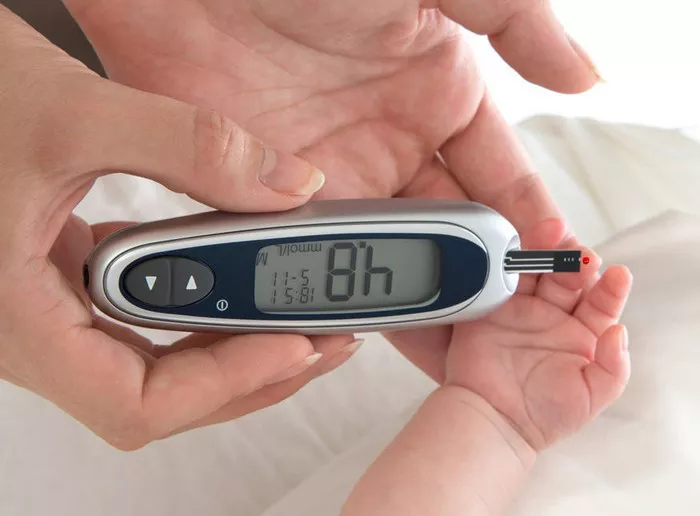Hypoglycemia, or low blood sugar, is a common concern for individuals with diabetes as well as those without. Recognizing the symptoms and understanding how to test for hypoglycemia are crucial for maintaining optimal health and preventing potentially dangerous complications. This article aims to provide a comprehensive guide on how to test yourself for hypoglycemia, covering various methods and considerations for accurate assessment.
Understanding Hypoglycemia
Before delving into testing methods, it’s essential to grasp the fundamentals of hypoglycemia. Hypoglycemia occurs when blood sugar levels drop below normal, typically defined as less than 70 milligrams per deciliter (mg/dL). Common causes include excessive insulin or diabetes medication, insufficient food intake, excessive physical activity, alcohol consumption, and certain medications.
Symptoms of hypoglycemia can vary but often include trembling, sweating, rapid heartbeat, confusion, dizziness, hunger, and irritability. Severe hypoglycemia can lead to seizures, loss of consciousness, and, if left untreated, coma or even death. Therefore, prompt identification and management are critical.
Testing Methods for Hypoglycemia
Several methods are available for testing blood sugar levels at home, providing individuals with the means to monitor their glucose levels conveniently. These methods include:
- Fingerstick Blood Glucose Monitoring: This is the most common method for testing blood sugar levels at home. It involves pricking the fingertip with a small lancet to obtain a drop of blood, which is then applied to a test strip inserted into a glucose meter. The meter measures the glucose concentration in the blood sample and displays the result within seconds.
- Continuous Glucose Monitoring (CGM): CGM systems consist of a sensor placed under the skin, typically on the abdomen, which continuously measures glucose levels in the interstitial fluid. The sensor transmits this data to a receiver or smartphone, allowing users to monitor their glucose levels in real-time. Some CGM systems also provide alerts for hypo- and hyperglycemia, enabling proactive management.
- Urine Glucose Testing: While less common than blood glucose monitoring, urine glucose testing involves collecting a urine sample and using a test strip to detect glucose levels. However, urine glucose testing is less accurate than blood glucose monitoring and may not reflect current blood sugar levels accurately.
- Symptom-Based Testing: In some cases, individuals may recognize the symptoms of hypoglycemia without testing their blood sugar levels directly. If symptoms such as shakiness, sweating, or confusion occur, consuming a fast-acting carbohydrate, such as fruit juice or glucose tablets, can help alleviate symptoms. However, symptom-based testing does not provide precise information about blood sugar levels and may not be suitable for everyone.
Guidelines for Testing
When testing for hypoglycemia, several guidelines can help ensure accurate results and effective management:
- Frequency of Testing: The frequency of blood glucose testing depends on individual factors such as diabetes type, treatment regimen, and overall health status. People with type 1 diabetes or insulin-treated type 2 diabetes may need to test their blood sugar multiple times per day, including before meals, after meals, before bedtime, and during periods of increased physical activity or illness.
- Timing of Testing: Testing at different times of the day can provide valuable insights into how diet, medication, physical activity, and other factors affect blood sugar levels. It’s essential to follow healthcare provider recommendations regarding when and how often to test blood sugar levels.
- Consistency: Testing under consistent conditions, such as at the same times each day and under similar circumstances, can help identify patterns and trends in blood sugar levels. Consistency also ensures that results are reliable and comparable over time.
- Record Keeping: Keeping a log of blood sugar readings, along with details such as meals, medications, physical activity, and any symptoms experienced, can help individuals and healthcare providers track trends, identify potential triggers for hypo- or hyperglycemia, and adjust treatment plans accordingly.
- Calibration and Maintenance: For individuals using glucose meters or CGM systems, proper calibration and maintenance are essential to ensure accurate readings. Regularly calibrating meters according to manufacturer instructions and replacing sensors or test strips as needed can help maintain accuracy and reliability.
Interpreting Test Results
Interpreting blood glucose test results involves understanding target ranges and taking into account individual circumstances and treatment goals. Target blood sugar ranges can vary depending on factors such as age, diabetes type, overall health, and treatment regimen. Healthcare providers typically provide guidance on target ranges and adjustments to treatment plans based on test results and individual needs.
In general, blood sugar levels below 70 mg/dL are considered hypoglycemic and may require intervention to raise blood sugar levels quickly. Consuming fast-acting carbohydrates such as glucose tablets, fruit juice, or candy can help raise blood sugar levels promptly. It’s essential to follow up with a source of longer-acting carbohydrates, such as a snack or meal, to prevent blood sugar levels from dropping again.
If hypoglycemia is severe or persistent, medical attention may be necessary to prevent complications. Glucagon, a hormone that raises blood sugar levels, may be administered in cases of severe hypoglycemia where the individual is unable to consume carbohydrates orally.
Conclusion
Testing for hypoglycemia is a critical aspect of diabetes management and can also benefit individuals without diabetes who may experience occasional low blood sugar. By understanding the various testing methods, guidelines for testing, and how to interpret test results, individuals can effectively monitor their blood sugar levels, identify potential issues, and take appropriate action to maintain optimal health. Regular communication with healthcare providers and adherence to treatment plans are essential for successful hypoglycemia management and overall well-being.
Related topics:
What is the Causes of Hypoglycemia in Pregnancy
























